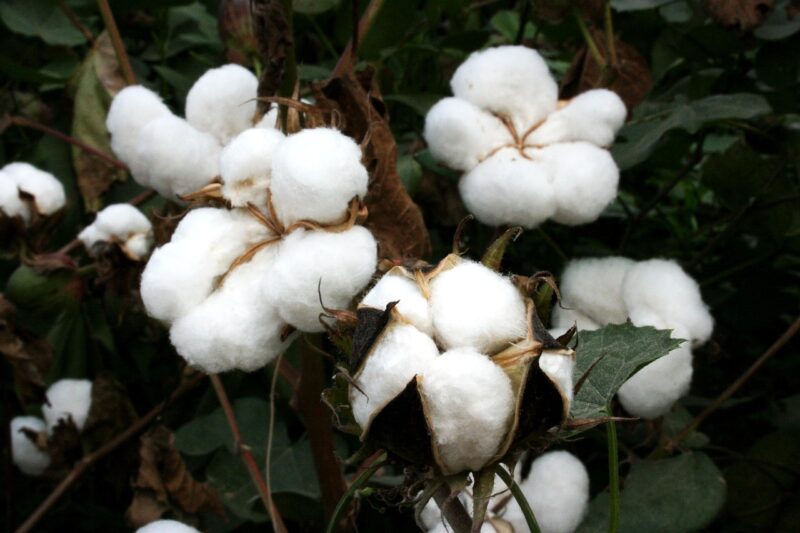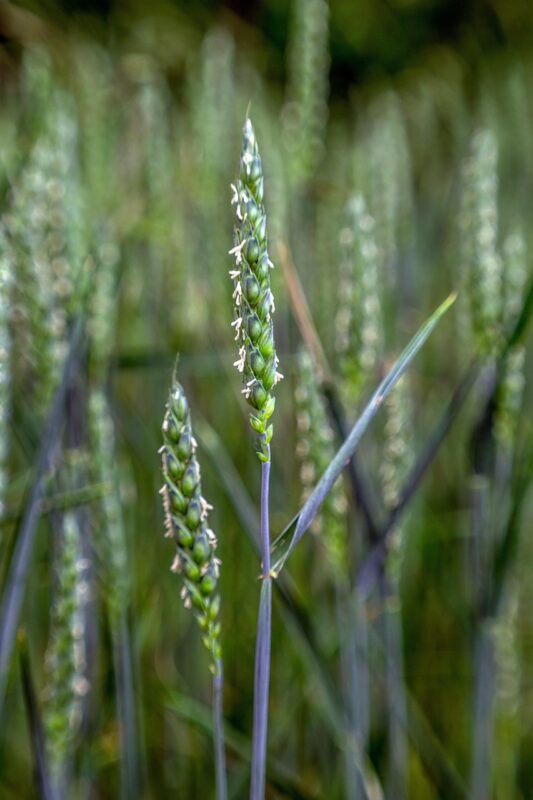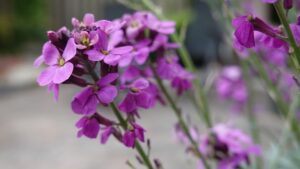In this comprehensive guide, we will explore an array of vegetables, farm crops, and herbs that are ideal for planting in June.
Vegetables To Plant
June is an excellent month for sowing a wide range of vegetables. With temperatures warming, many crops thrive and produce bountiful yields. Here are ten vegetables you can consider planting this month:
Beans (Phaseolus vulgaris)
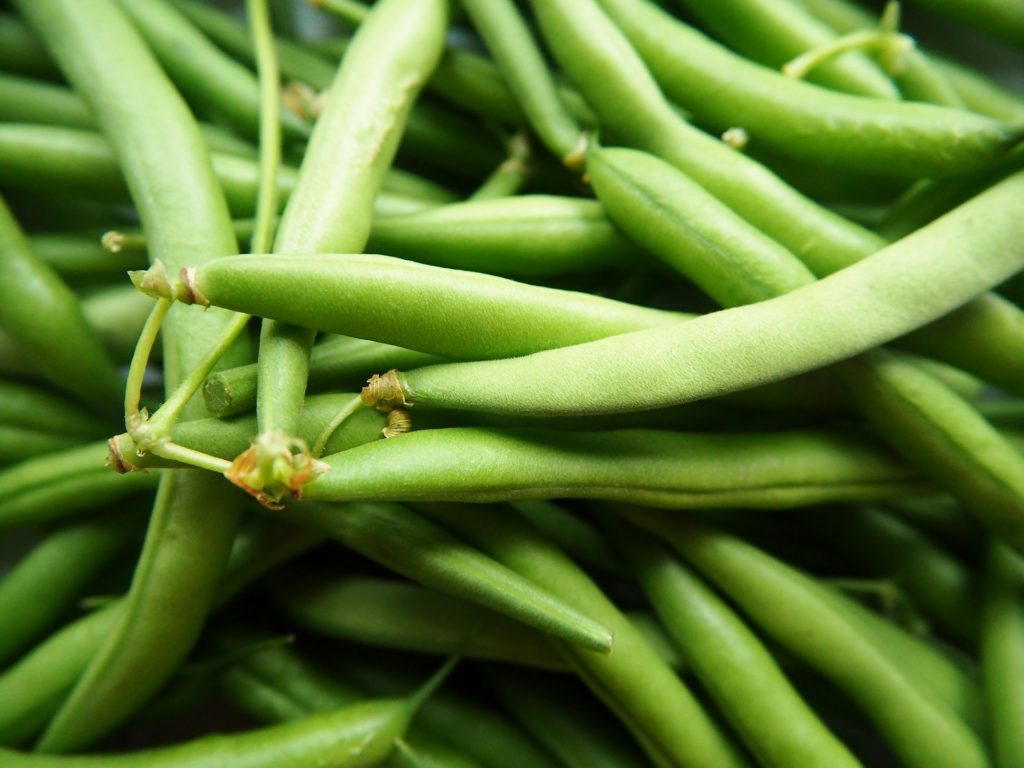
Beans are an essential warm-season crop that thrives in temperatures between 70°F to 90°F (21°C to 32°C). With a quick maturation period, they can be planted directly into the soil in June, particularly in USDA zones 3-10.
Planting Instructions: Sow seeds about 1 inch deep, spacing them 2-4 inches apart. Beans can be planted in rows or staggered in a double row to maximize space.
Harvest Time: Depending on the variety, you can expect to start harvesting in roughly 50 to 70 days.
Unique Attributes: Beans benefit from nitrogen-fixing properties, meaning they improve soil fertility by converting atmospheric nitrogen into a form that plants can use. Plus, they come in various types including snap, shell, and dry beans, providing versatility in the kitchen.
Corn (Zea mays)
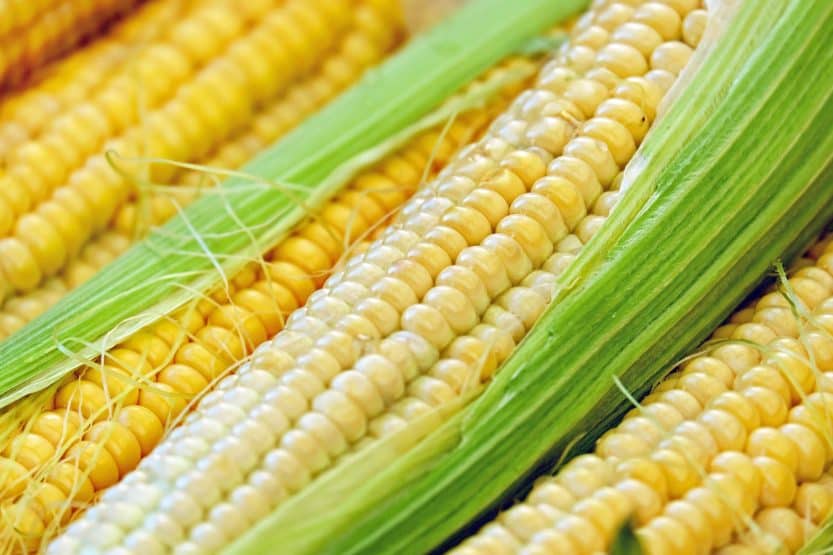
Corn is a classic summer crop that loves warm weather, germinating optimally at temperatures ranging from 60°F to 95°F (15°C to 35°C). June is an ideal time to sow corn seeds, particularly in regions with a shorter growing season.
Planting Instructions: Plant seeds in well-drained soil, about 1 to 1.5 inches deep, and space them about 12 inches apart in rows that are 30-36 inches apart.
Harvest Time: Depending on its variety, corn can take anywhere from 60 to 100 days to reach maturity.
Unique Attributes: Corn is wind-pollinated, so it’s often helpful to plant in blocks rather than long single rows to ensure good pollination. The diversity of corn varieties, from sweet corn to popcorn and ornamental types, provides avenues for various culinary uses.
Cucumbers (Cucumis sativus)
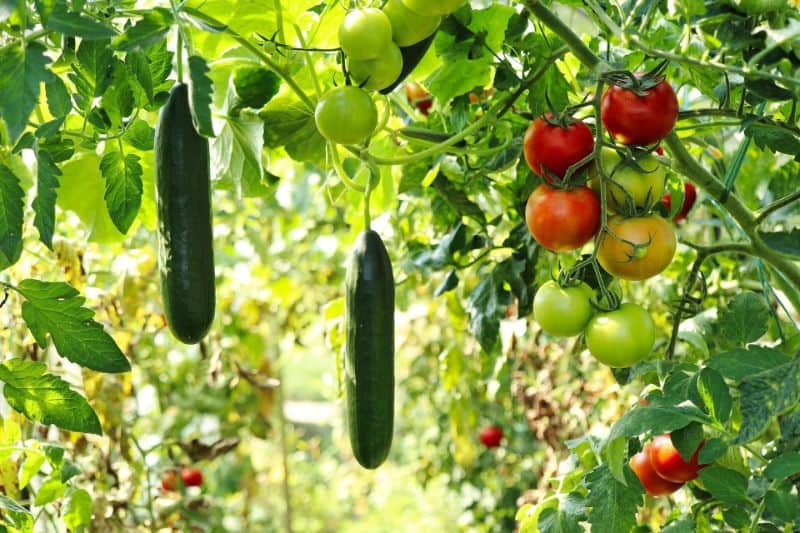
Cucumbers are a fast-growing vine that flourishes in June’s warm soil. They prefer sunny locations and grow best when daytime temperatures reach 70°F to 95°F (21°C to 35°C).
Planting Instructions: Sow seeds directly into the garden about 1 inch deep, spacing them 12-18 inches apart. If using seedlings, transplant in June after danger of frost.
Harvest Time: Cucumbers are typically ready for harvest in 50 to 70 days.
Unique Attributes: Known for their hydrating properties, cucumbers can be enjoyed fresh in salads, pickled for preservation, or even blended into refreshing drinks. They can also be cultivated in containers, making them a great option for smaller gardens.
Okra (Abelmoschus esculentus)
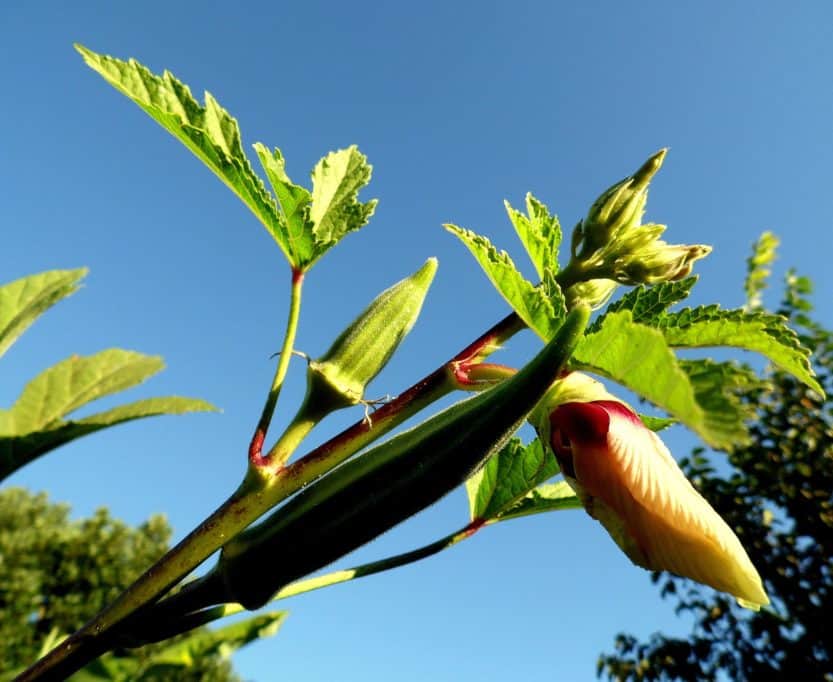
Okra thrives in heat and is perfect for planting in June due to its high temperature tolerance, ideally flourishing between 75°F and 90°F (24°C to 32°C). This southern favorite is well-suited for USDA zones 5-11.
Planting Instructions: Seed okra about 1 inch deep and 12-18 inches apart in rows spaced 3 feet apart.
Harvest Time: Harvest generally occurs between 50 to 60 days after planting.
Unique Attributes: The mucilaginous properties of okra make it a fantastic thickening agent for soups and stews. Additionally, it serves as an excellent source of dietary fiber and vitamins A and C.
Squash (Cucurbita pepo)
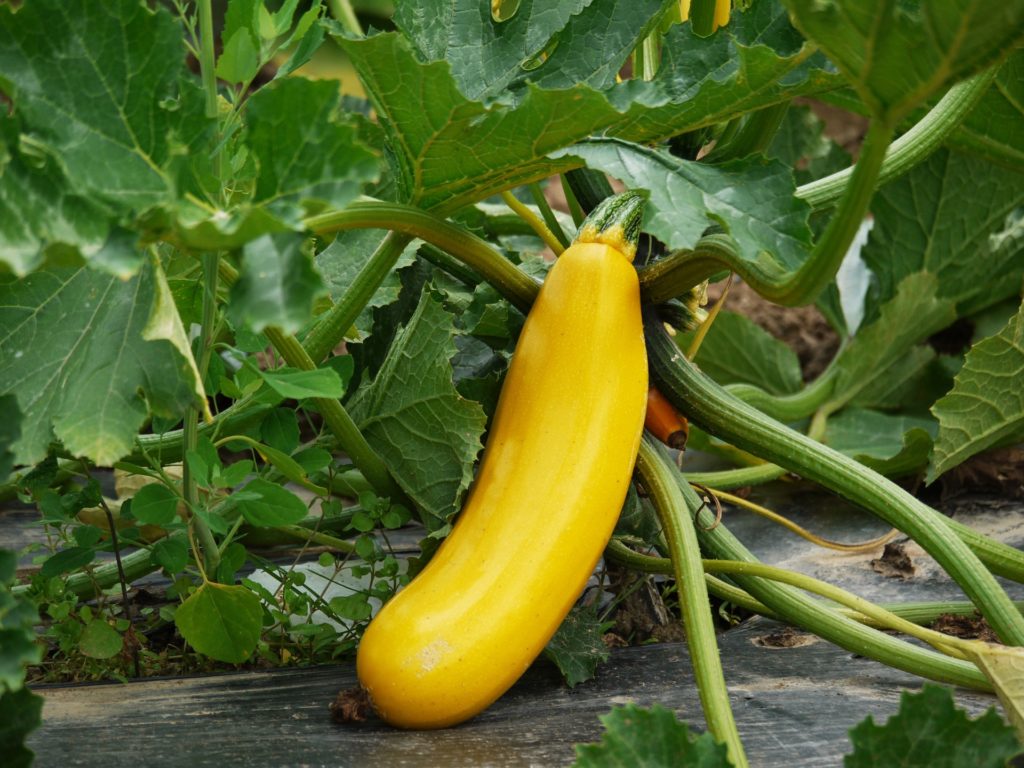
Summer squash, including varieties like zucchini and yellow squash, are ideal for planting in June when the risk of frost has passed. These plants enjoy warm weather, with optimal growing temperatures around 70°F to 90°F (21°C to 32°C).
Planting Instructions: Sow seeds directly in the soil about 1 inch deep and space them 2-3 feet apart.
Harvest Time: Harvest typically occurs within 50 to 60 days.
Unique Attributes: Summer squash can be used in various culinary dishes, from grilling and roasting to stir-frying. They also have a high water content and are low in calories, making them an excellent addition to healthy eating plans.
Peppers (Capsicum annuum)
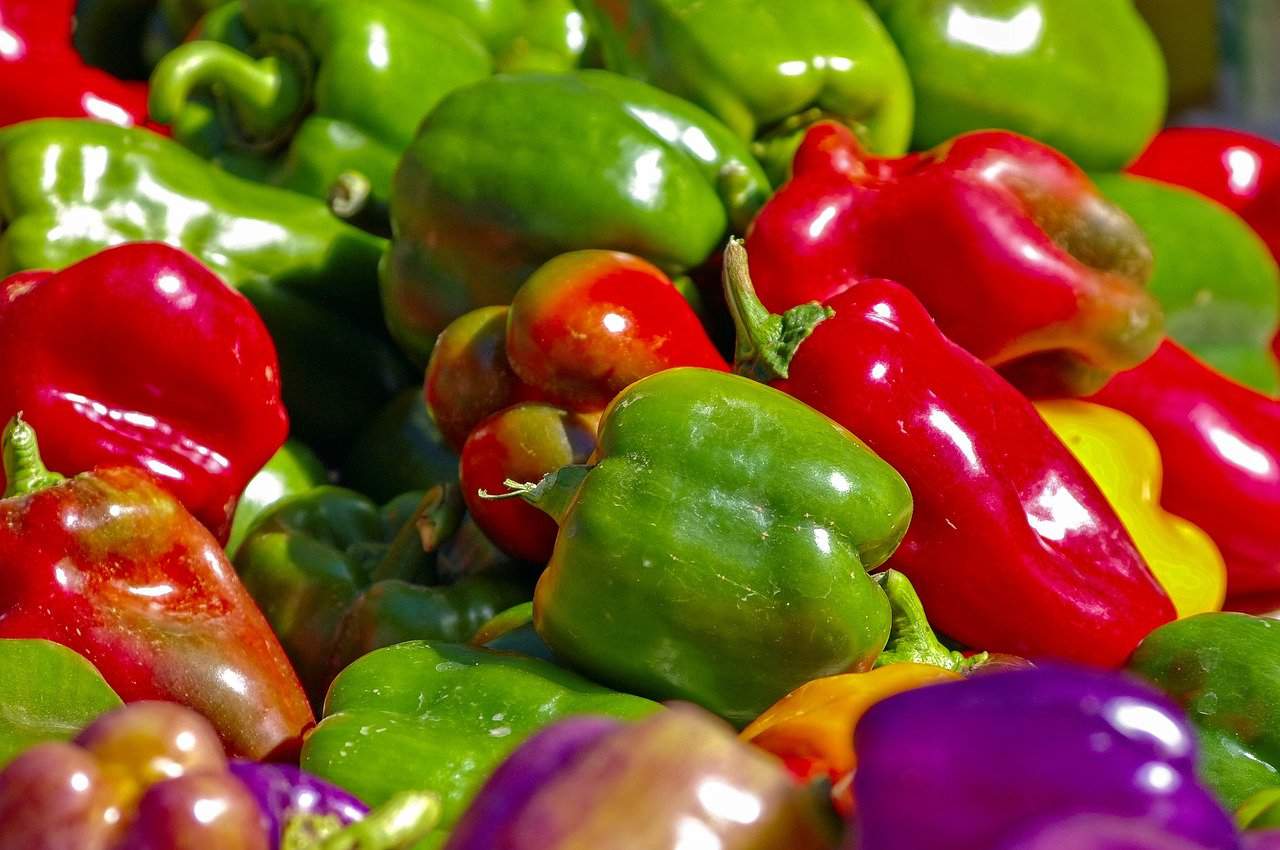
Peppers prefer warm conditions and can be successfully planted in June, suited for temperatures of 70°F to 85°F (21°C to 29°C). This time frame is ideal for both sweet and hot pepper varieties, particularly in USDA zones 4-11.
Planting Instructions: Space pepper plants 18-24 inches apart, burying them deeply to encourage root growth.
Harvest Time: Depending on the variety, peppers can be ready to harvest in 60 to 90 days.
Unique Attributes: Peppers come in a variety of flavors and colors, providing plenty of options for culinary development. They are also rich in vitamins and antioxidants, enhancing nutritional intake when added to dishes.
Tomatoes (Solanum lycopersicum)
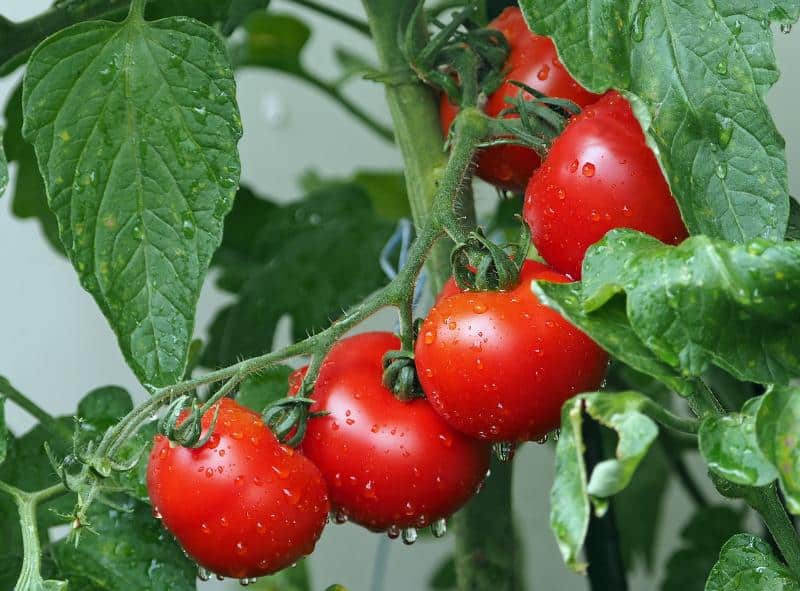
Tomatoes are possibly one of the most popular garden vegetables, loving warm weather and growing well in June’s heat, with optimal temperatures between 70°F and 85°F (21°C to 29°C). Suitable for USDA zones 3-10, they are one crop that no gardener should skip.
Planting Instructions: Plant tomato seedlings 1-2 feet apart, ideally in well-drained, rich soil. It’s beneficial to plant them deep, covering the stem to promote root growth.
Harvest Time: Tomatoes typically take 60 to 85 days to mature, depending on the type.
Unique Attributes: With an array of varieties available, ranging from paste tomatoes for sauces to juicy slicing tomatoes for salads, they not only provide diverse culinary uses but are also packed with nutrients, including lycopene, which is linked to health benefits.
Eggplant (Solanum melongena)
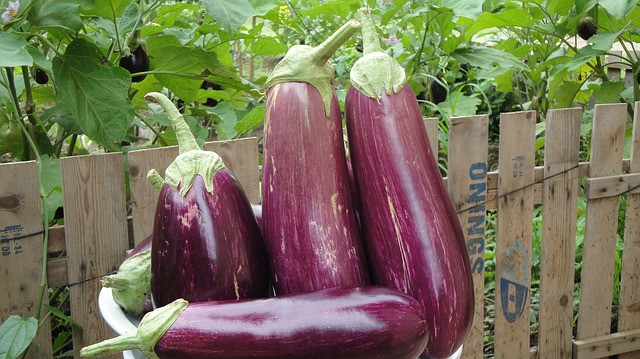
Eggplant thrives in warmer conditions and prefers temperatures from 70°F to 90°F (21°C to 32°C). June is an optimal time for planting in USDA zones 5-11.
Planting Instructions: Sow seeds or transplant seedlings, ensuring a spacing of 18-24 inches apart in rich, well-drained soil.
Harvest Time: Eggplants can generally be harvested within 65 to 80 days post-planting.
Unique Attributes: With distinct textures and flavors, eggplants are excellent for grilling, baking, and sautéing. They are also low in calories while providing valuable dietary fiber and antioxidants.
Carrots (Daucus carota)

Although often associated with cooler temperatures, carrots can be planted in June in many regions, particularly in USDA zones 3-7, where excess heat will not affect their growth unduly. They prefer soil temperatures around 60°F to 75°F (16°C to 24°C).
Planting Instructions: Sow seeds about 0.5 inches deep, spacing them a few inches apart or in rows for easy harvesting.
Harvest Time: Carrots typically mature in 70 to 80 days.
Unique Attributes: Carrots are versatile root vegetables packed with beta-carotene, aiding vision and immune health. They can be harvested at various stages, from baby carrots to mature roots, offering flexibility in harvest timing.
Beets (Beta vulgaris)

Beets are a hardy crop that thrives in cooler soil early in the growing season, making them suitable for June planting in USDA zones 3-10. They perform well at temperatures between 50°F and 85°F (10°C to 29°C).
Planting Instructions: Sow seeds about 1 inch deep and space them 1-4 inches apart. Be aware that beet seeds are clusters of seeds, so thinning may be required post-germination.
Harvest Time: Beets can be harvested in about 50 to 70 days, depending on the desired size.
Unique Attributes: Not only are beets delicious roasted or pickled, but their greens, often overlooked, are highly nutritious and can be used in salads. Beets also exhibit anti-inflammatory and antioxidant properties, supporting overall health.
Farm Crops To Plant
Beyond traditional home gardening, June is an excellent month for larger-scale farm crops. They offer essential food supplies and can be cultivated on a broader landscape. Here are ten farm crops to consider this month:
Soybeans (Glycine max)
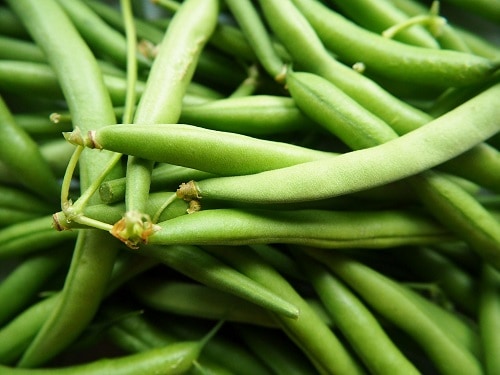
Soybeans thrive in warm weather, preferring temperatures around 70°F to 95°F (21°C to 35°C) and establishing a strong foundation during June planting in USDA zones 3-10.
Planting Instructions: Sow seeds about 1-2 inches deep, spacing them 1-3 inches apart in rows that are about 30 inches apart.
Harvest Time: Expect to harvest in 75 to 120 days, depending on the variety and growing conditions.
Unique Attributes: Soybeans are a cornerstone crop for animal feed and have significant relevance in human nutrition through products like tofu, soy milk, and edamame. They showcase excellent nitrogen-fixing capabilities, contributing to soil health.
Sunflowers (Helianthus annuus)
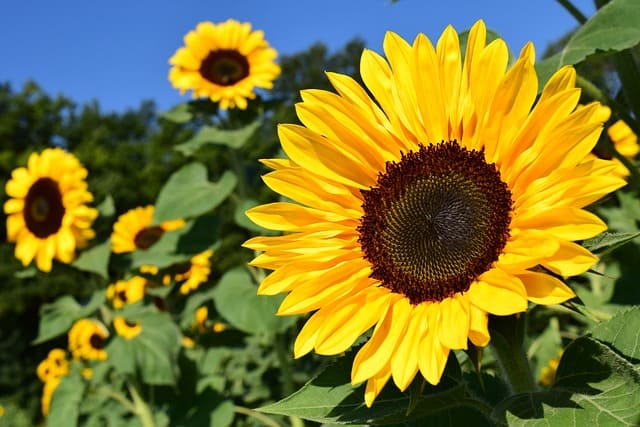
Sunflowers are iconic summer farm crops that thrive in full sun, loving temperatures from 70°F to 90°F (21°C to 32°C). They can be planted from late spring into June in USDA zones 3-10.
Planting Instructions: Sow seeds about 1-2 inches deep, spacing them 6-12 inches apart, depending on the desired final plant size.
Harvest Time: Sunflowers typically reach maturity in about 70 to 100 days.
Unique Attributes: As both an ornamental and functional crop, sunflowers provide food for birds and produce seeds rich in healthy fats and protein for human consumption. Additionally, they are often used for oil extraction, making them economically beneficial.
Grain Sorghum (Sorghum bicolor)

Grain sorghum is a drought-resistant crop that flourishes in warm weather, thriving at temperatures between 70°F and 95°F (21°C to 35°C). June is an optimal planting time in various USDA zones.
Planting Instructions: Sow seeds about ¾ to 1 inch deep, spacing them 6-12 inches apart.
Harvest Time: Harvest is typically possible in 90 to 120 days, depending on conditions.
Unique Attributes: Grain sorghum is extremely versatile, serving as animal feed, human food, and even biofuel. Its resilience against drought makes it invaluable in drier climates while contributing to soil health through reduced water usage.
Cotton (Gossypium hirsutum)
Cotton is a warm-weather crop that thrives best when soil temperatures reach 60°F (16°C) or higher. June is ideal for planting in USDA zones 7-11.
Planting Instructions: Sow seeds about 1 inch deep and space them 3 inches apart in rows spaced 3-4 feet apart.
Harvest Time: Cotton can be harvested within 150-180 days after planting.
Unique Attributes: Cotton’s fibers are integral to the textile industry, and its seeds are crushed for oil. The plant also naturally resists pests, making it a sustainable choice in a crop rotation system.
Pumpkin (Cucurbita pepo)

Pumpkins are another warm-season crop that grows exceptionally well in June. They require ample sunlight and thrive at temperatures across the 70°F to 85°F (21°C to 29°C) spectrum suitable for USDA zones 3-10.
Planting Instructions: Plant seeds about 1 inch deep and allow them at least 3-4 feet of space between plants.
Harvest Time: Depending on the variety, pumpkins usually take 90 to 120 days to reach maturity.
Unique Attributes: Beyond being staples for fall decorations, pumpkins are also nutritious and can be used in a multitude of recipes. They offer significant health benefits owing to their rich content of vitamins A and C, fiber, and antioxidants.
Barley (Hordeum vulgare)
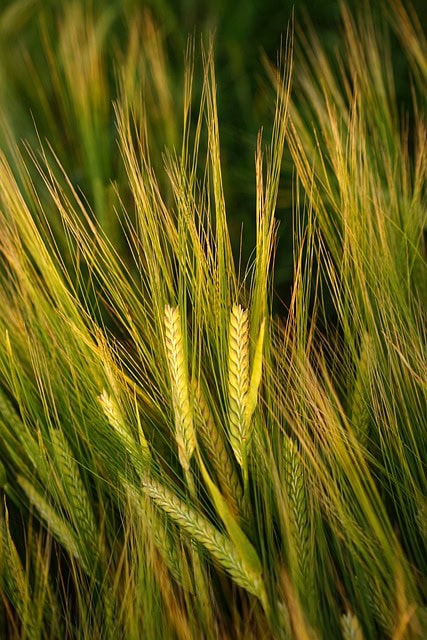
Barley is a resilient cereal crop that thrives in moderately high temperatures (60°F to 75°F or 15°C to 24°C). While spring is typically associated with planting barley, June planting can be ideal especially in cooler regions within USDA zones 3-7.
Planting Instructions: Plant seeds about 1-2 inches deep, spacing them 6 inches apart in rows 18 inches apart.
Harvest Time: Barley typically reaches harvestable maturity in 70 to 90 days.
Unique Attributes: Barley is a key component in both animal feed and brewing industries. It is rich in dietary fiber and nutrients, making it an excellent choice for food products, further offering benefits in improving heart health and reducing blood sugar levels.
Oats (Avena sativa)
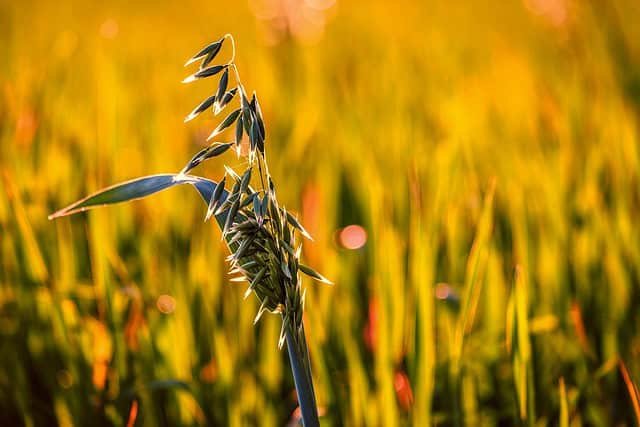
Oats are adaptable grains that thrive well in mid-to-early summer. While they are often planted in early spring, they can also be sown in June in many regions, especially cooler ones, where they prefer temperatures between 60°F and 75°F (15°C to 24°C).
Planting Instructions: Sow seeds about 1 to 2 inches deep with spacing options of 1-2 inches between seeds.
Harvest Time: Oats can reach maturity roughly 60 to 80 days post-planting.
Unique Attributes: Oats are recognized for their health benefits, especially in lowering cholesterol and providing consistent energy through complex carbohydrates. Beyond their healthful properties, they are also utilized for animal feed and in skincare products.
Peas (Pisum sativum)
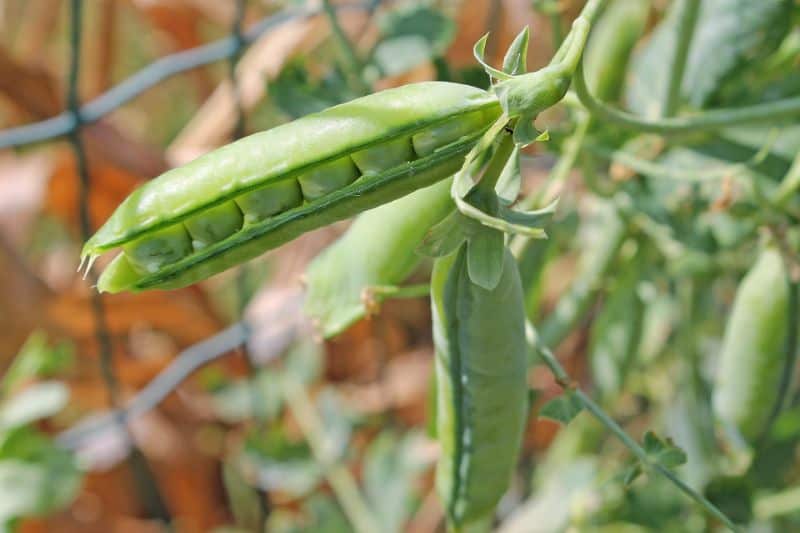
Though peas are traditionally a cooler weather crop, planting in June is possible, especially in regions with milder summer climates. They grow well when temperatures are ideally around 60°F to 75°F (15°C to 24°C).
Planting Instructions: Sow seeds about an inch deep, spacing them about 1-2 inches apart.
Harvest Time: Peas are usually ready for harvest in 60 to 70 days.
Unique Attributes: Peas are highly nutritious and versatile, perfect for spring salads or soups. Additionally, they play a crucial role in crop rotation, enhancing soil nitrogen levels.
Triticale (× Triticosecale)
This hybrid between wheat and rye, triticale, tolerates a range of conditions and thrives in moderate to cooler climates, especially in USDA zones 4-9. June planting allows this hardy crop to establish itself before the hottest days of summer.
Planting Instructions: Sow seeds about 1 inch deep and space them at about 6 inches apart in rows around 18 inches apart.
Harvest Time: Triticale usually ripens in 90 to 120 days.
Unique Attributes: Triticale combines the grain quality characteristics of wheat with the ruggedness of rye, making it ideal for animal feed and grain products. Its ability to withstand poorer soils also makes it favorable for sustainable agriculture.
Forage Turnips (Brassica rapa)
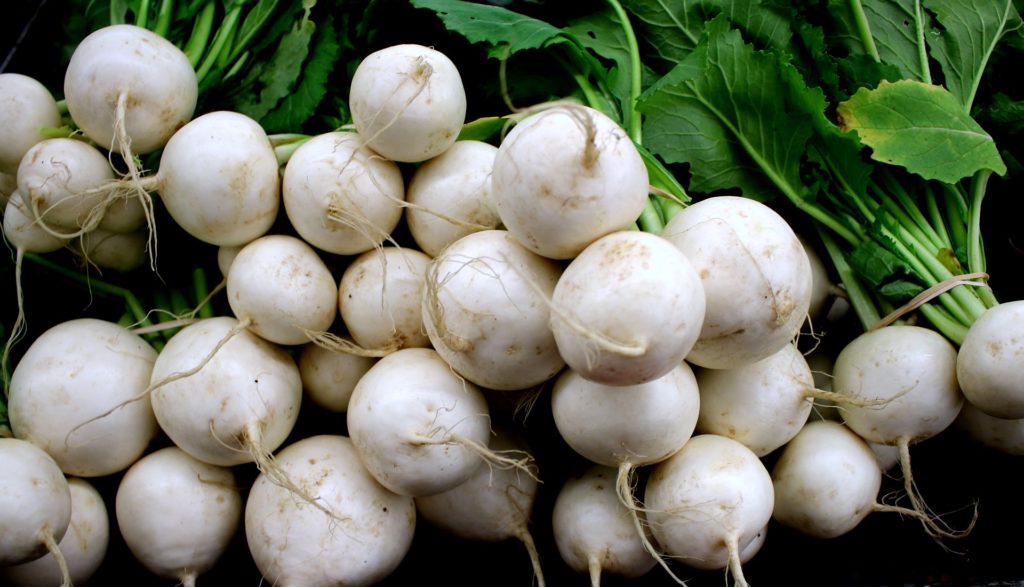
Forage turnips, popular in livestock diets, thrive in a variety of conditions. Planting them in June allows them to grow rapidly in the warm summer months. This crop performs best with temperatures ranging from 60°F to 75°F (15°C to 24°C).
Planting Instructions: Sow seeds ¼ to ½ inch deep and space them around 6 inches apart.
Harvest Time: Expect to harvest forage turnips within 60 to 90 days.
Unique Attributes: When used as cover crops, forage turnips improve soil conditions while providing forage for livestock. Their rapid growth makes them an attractive option for rotational grazing plans.
Herbs To Plant
Herbs add flavor to our dishes and offer potential health benefits. June is an excellent month for planting many herb varieties, which flourish in warm conditions. Here’s a list of herbs suitable for planting this month:
Basil (Ocimum basilicum)
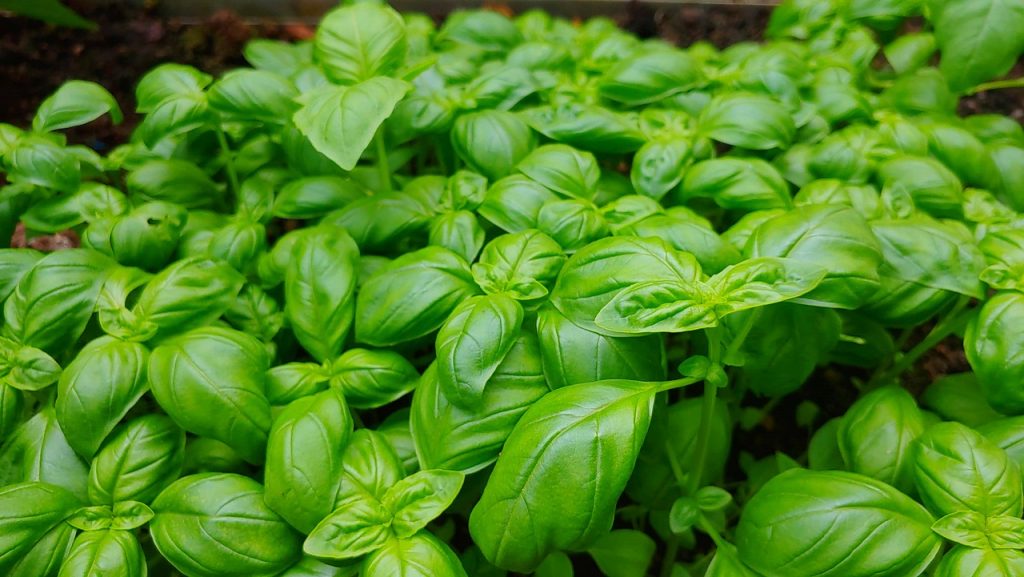
Basil is a quintessential summer herb that thrives in the warmth, requiring temperatures between 70°F and 90°F (21°C to 32°C). June is a prime time for USDA zones 4-10 to sow this flavorful herb.
Planting Instructions: Sow seeds ¼ inch deep and space them 12 inches apart in well-drained soil and full sun.
Harvest Time: Basil can be harvested about 60 days after planting, but leaves can be taken as soon as they are large enough.
Unique Attributes: Basil is rich in antioxidants and has anti-inflammatory properties. Its aromatic leaves are essential in cuisine worldwide, especially in Mediterranean dishes.
Cilantro (Coriandrum sativum)
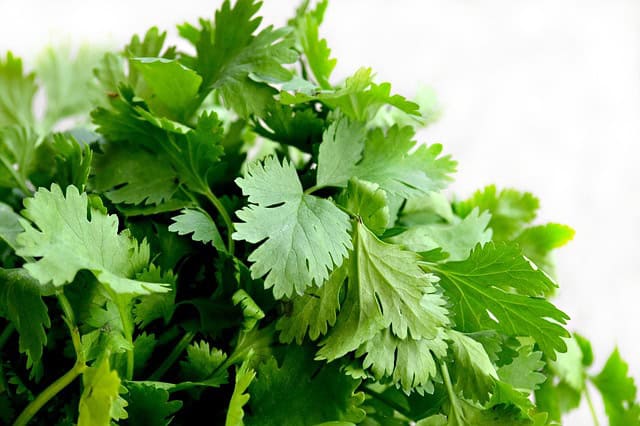
Cilantro, also known as coriander in its seed form, can be a delightful addition to your herb garden. Preferring temperatures of 55°F to 75°F (13°C to 24°C), cilantro grows best in cooler conditions but can continue growing in June’s warmer weather.
Planting Instructions: Sow seeds about ¼ inch deep and 1-2 inches apart. Thin seedlings once they are a few inches tall.
Harvest Time: Cilantro can be harvested in just 30 to 40 days.
Unique Attributes: Frequently used in Latin and Asian cuisines, cilantro is known for its unique flavor and health benefits, such as promoting digestive health.
Parsley (Petroselinum crispum)
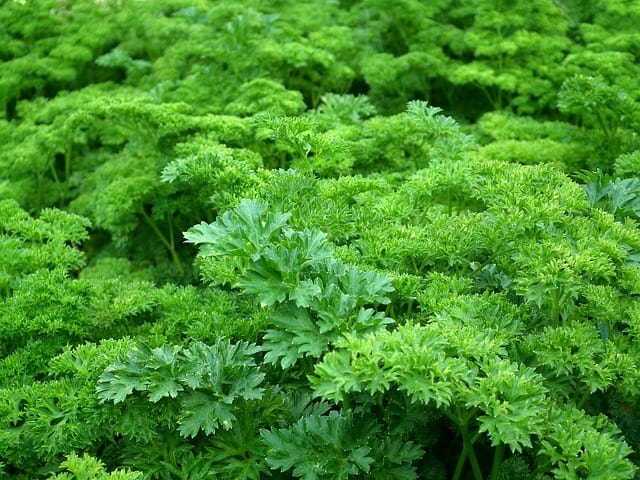
Parsley is a biennial herb that thrives in part sun and prefers temperatures between 60°F to 75°F (16°C to 24°C). While it can be planted earlier, June remains viable for USDA zones 4-10.
Planting Instructions: Sow seeds ¼ inch deep, spacing them 6-8 inches apart.
Harvest Time: Parsley typically reaches maturity in about 70 to 90 days.
Unique Attributes: Parsley is packed with vitamins A, C, and K and serves as an excellent garnish. Additionally, it can help detoxify the body.
Dill (Anethum graveolens)

Dill grows best in warm conditions, thriving between 60°F and 70°F (16°C to 21°C). Planting in June is suitable in USDA zones 3-10.
Planting Instructions: Sow seeds ¼ inch deep and space them 12 inches apart.
Harvest Time: Dill is usually ready to harvest in 40 to 60 days, particularly when the plants are young.
Unique Attributes: Dill has culinary and medicinal uses, providing flavor in pickles and potato salads. It also supports digestion and has antimicrobial properties.
Chives (Allium schoenoprasum)
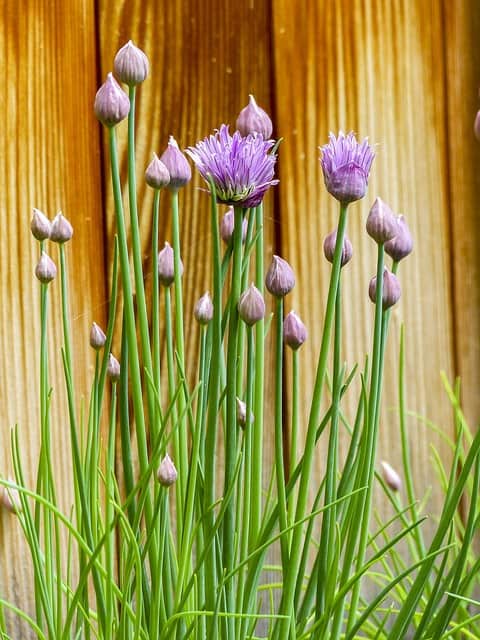
Chives are perennial herbs that thrive in well-drained soil and can adapt to a range of temperatures, ideally between 60°F and 75°F (15°C to 24°C). June is favorable for planting chives in USDA zones 3-9.
Planting Instructions: Plant seeds about ¼ inch deep, spacing them 12 inches apart.
Harvest Time: Chives can be harvested in approximately 60 days but can be snipped earlier for culinary use.
Unique Attributes: Chives add a mild onion flavor to dishes and are rich in vitamins A and C. They are also aesthetically pleasing with their beautiful purple flowers.
Mint (Mentha spp.)
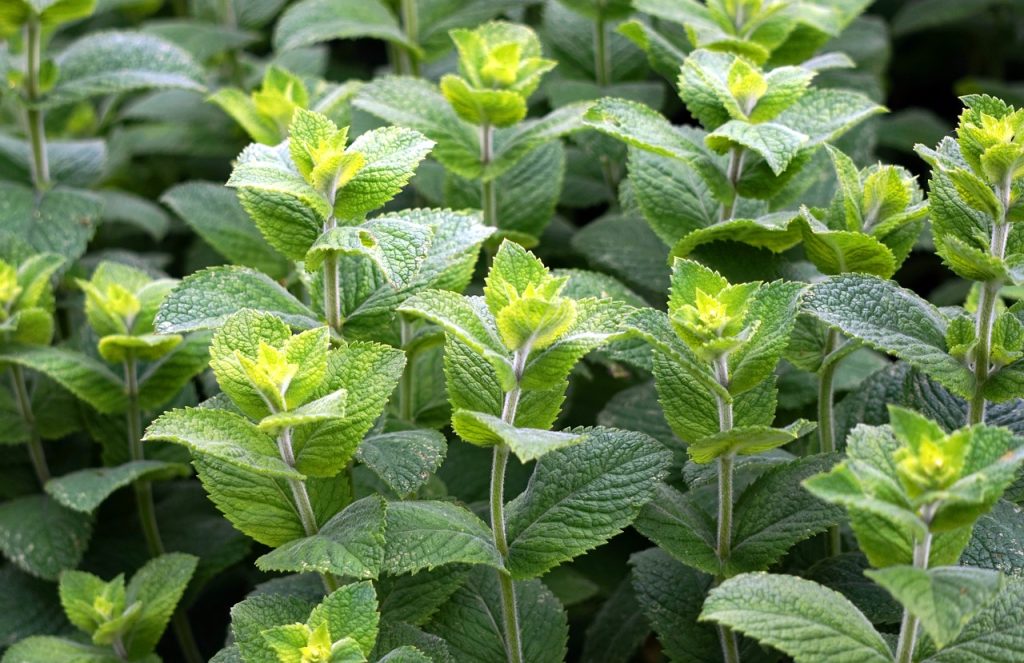
Mint varieties thrive in warm weather but prefer partial shade. Suitable temperatures range from 60°F to 75°F (15°C to 24°C), making June a great time to plant in USDA zones 3-8.
Planting Instructions: Sow or transplant cuttings about 1 inch deep, allowing for plenty of space as mint can spread aggressively.
Harvest Time: Mint can be picked about 60 days after planting but may be ready earlier.
Unique Attributes: Known for its aromatic fragrance, mint has numerous culinary and medicinal uses, such as alleviating digestive issues. This herb attracts pollinators, making it beneficial for overall garden health.
Oregano (Origanum vulgare)
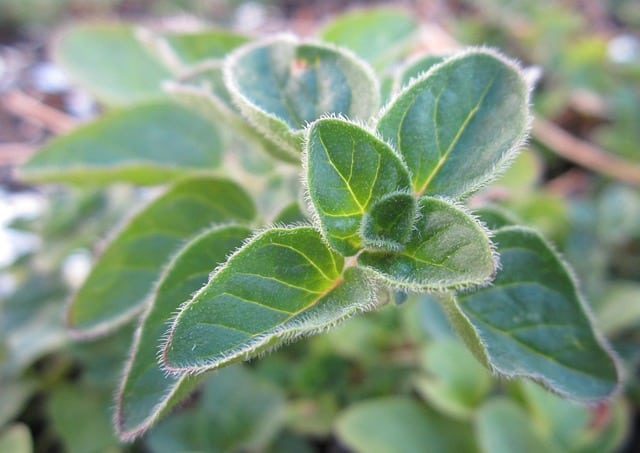
Oregano is a hardy perennial herb thriving in warmer temperatures around 70°F to 80°F (21°C to 27°C). It can be planted in June for robust growth in USDA zones 5-10.
Planting Instructions: Sow seeds ¼ inch deep, spacing them 12-18 inches apart.
Harvest Time: Oregano can be harvested approximately 70 days after sowing.
Unique Attributes: Oregano is renowned for its strong flavor profiles, particularly in Italian and Mediterranean cuisines. It also boasts numerous health benefits, including antioxidant properties.
Thyme (Thymus vulgaris)
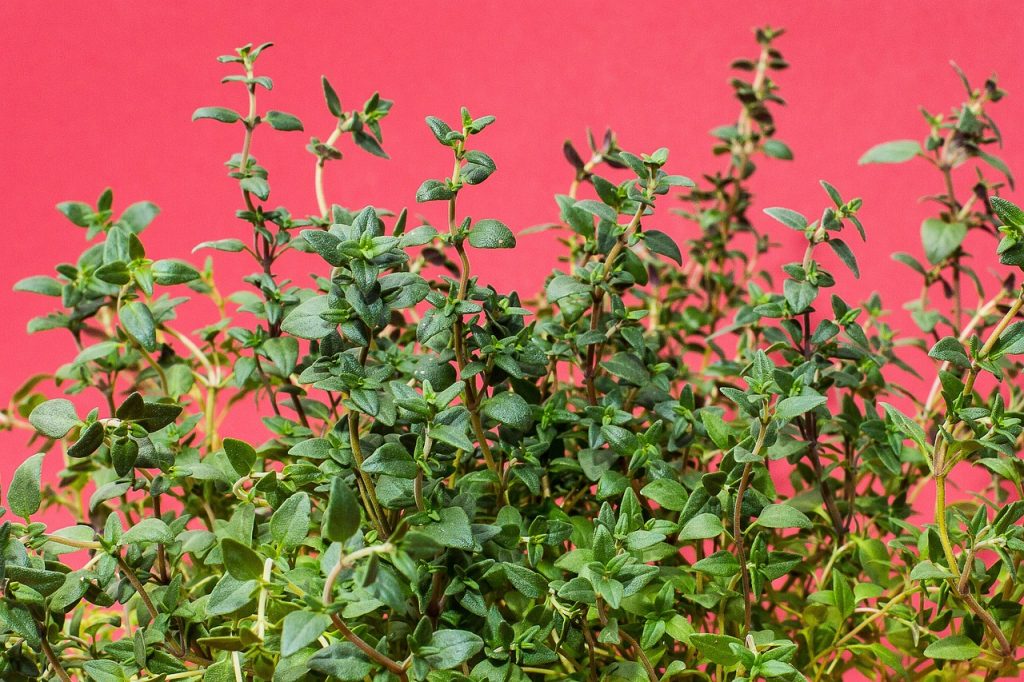
Thyme is a resilient herb that flourishes in sunny spots and grows well in temperatures ranging from 60°F to 75°F (15°C to 24°C). June planting is excellent for USDA zones 4-9.
Planting Instructions: Sow seeds about ¼ inch deep, spacing them 12 inches apart.
Harvest Time: Thyme is normally ready to use within 90 days.
Unique Attributes: Thyme contains essential oils that have antimicrobial properties, making it beneficial for overall health. It is often used in cooking, particularly in Mediterranean dishes, and pairs well with numerous foods.
Rosemary (Salvia rosmarinus)
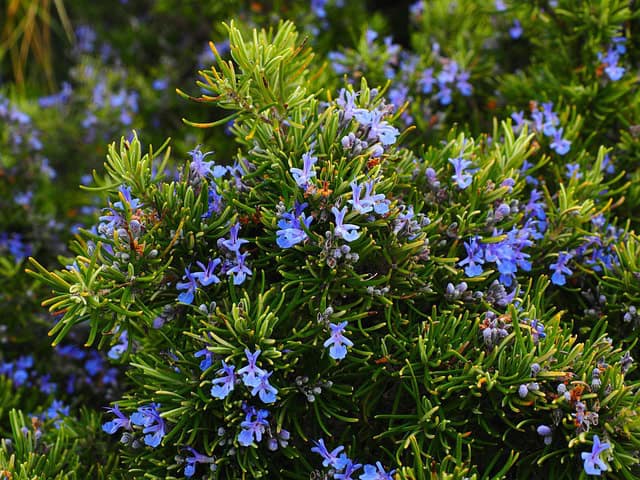
Rosemary loves the heat and thrives in temperate regions, with ideal growing conditions between 65°F and 75°F (18°C to 24°C). June is an excellent time for planting this herb in USDA zones 7-10.
Planting Instructions: Plant rosemary in well-drained soil about 1 inch deep, keeping spacing at least 2 feet apart.
Harvest Time: It may take about 90 to 100 days for seedlings to reach harvest time.
Unique Attributes: Rosemary is rich in antioxidants and may have cognitive benefits. It is a popular herb, known for its distinctive flavor in meat dishes and aromatherapy uses.



